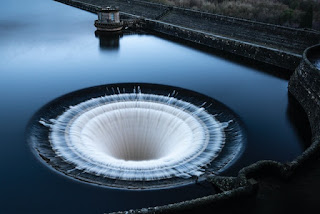Search This Blog
Most Popular
What is a Transfer Beam?
May 27, 2020
Categories
- Building Construction (83)
- Building Materials (82)
- Columns (2)
- Concrete Beam (3)
- Concrete Construction Techniques (4)
- Concrete Mix Design (10)
- Concrete Repair (14)
- Concrete Slab (10)
- Construction Equipment (16)
- Construction News (7)
- Design of Structures (15)
- Engineering Drawing (1)
- Estimation (3)
- Geotechnical engineering (26)
- Highway Engineering (11)
- Innovations (30)
- Material Testing (9)
- Matrix Analysis of Structures (2)
- Mechanical Engineering (3)
- Strength of Materials (2)
- Structural Analysis (17)
- Structural Design (21)
- Structures (17)
- Transportation Engineering (9)
Sources of Water | Water Supply Engineering
Neenu
May 05, 2023
The significant sources of water for supply and consumption are spread among different natural resources. Water is directly or indirectly taken from these sources based on their availability. Water is available through rain, surface sources, sub-surface sources, and water reclamation.
In this article, we will outline the features of all the major sources of water and their significance in water supply engineering.
1. Rainwater
----------------------------------------------------------------------------------------------------------------------------
Rainwater can be a valuable source of water for households and communities, especially in areas where access to clean water is limited. Using a simple arrangement, rainwater can be collected from rooftops, or from prepared catchment directly and stored in a small underground tank or cistern. This helps to meet small individual supplies.  |
| Rainwater Harvesting |
Collecting and using rainwater can help reduce reliance on expensive and energy-intensive water treatment processes, and also help conserve local water resources. However, it is important to ensure that appropriate collection and storage practices are followed to maintain the quality and safety of the harvested rainwater.
2. Surface Water
----------------------------------------------------------------------------------------------------------------------------
Surface sources of water are sources of water available at the ground surface or the ones available as runoff. Surface water is directly used by locals or considered a major source of water supply. The major surface water sources are lakes, seas, rivers, and storage reservoirs.
Based on the type of surface water source, different schemes of collection can be employed.
1. Water from Rivers by Continuous Draft
In this scheme, the water is collected directly from the river, without any diversion work as shown in the figure below.
 |
| Water Intake Structure Image Credits: Xylem |
2. Water from Rivers by Diversion Works
In this method, diversion works are constructed across a perennial river. This arrangement diverts the water to a canal which leads water to the site of water purification works as shown in the figure below.
 |
| Sources of Water-Diversion Ponds |
3. Water from Reservoir Storage
Here, a dam is constructed across the river and water is stored in the reservoir. This arrangement is employed in sites where the water supply is not ensured throughout the year.
4. Water from Direct Intake from Natural Lakes
This scheme collects water through direct intakes from natural lakes which receive surface run-off from the adjoining catchment.
3. Sub-Surface Sources of Water
----------------------------------------------------------------------------------------------------------------------------
Subsurface sources of water are underground water sources that are used as a water supply system. These are mostly used for water supply by employing certain construction technologies to extract water from their main source i.e. groundwater.
The major sub-surface sources of water are springs, infiltration galleries, infiltration wells, and wells.
4. Water Obtained by Reclamation
----------------------------------------------------------------------------------------------------------------------------
Water reclamation or water recycling or water reuse is the process of treating wastewater or sewage to remove impurities and make it suitable for various purposes, such as irrigation, industrial processes, or even drinking. Reclaimed water is an important resource for areas facing water scarcity, as it can help reduce the strain on natural water sources and provide a reliable and sustainable source of water. However, it is important to ensure that appropriate treatment and monitoring measures are in place to ensure the safety and quality of the reclaimed water.
Read More: Water Supply Engineering
Most Visited
Sieve Analysis of Aggregates - ASTM Standard
August 11, 2021
How to Calculate Cement Required for Floor Tiling?
July 02, 2020
What are Infiltration Wells?
April 15, 2024
Cross-Section of a Road – Geometric Design of Highways
February 26, 2021
How to Choose Good Quality Aggregates for Construction?
August 10, 2021
Traverse Surveying - Objective, Method and Procedure
January 19, 2022
Construction ERP System – A Comprehensive Guide
December 12, 2024
Top 7 Waterproofing Materials for Concrete Roofs
December 13, 2024
Search This Blog
MUST READ
What is PERT? Objectives, Pros & Cons
September 10, 2017
Terzaghi's Equation: Soil Bearing Capacity for Foundations
March 02, 2022
Contact Form
Footer Menu Widget
Created By SoraTemplates | Distributed By Gooyaabi Templates




0 Comments
Commenting Spam Links Are Against Policies